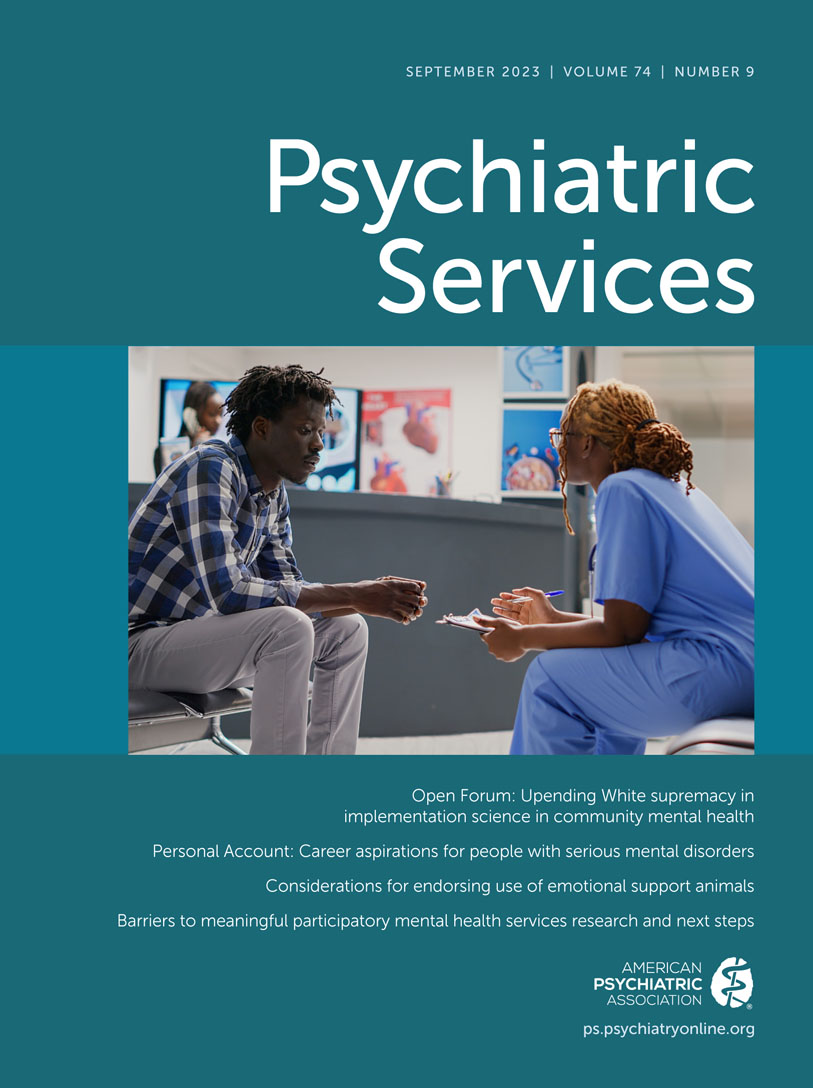Impact of Treatment Initiation and Engagement on Deliberate Self-Harm Among Individuals With First-Episode Psychosis
Abstract
Objective:
Individuals with psychosis are at increased risk for suicide, with the greatest risk being present during the first few months after diagnosis. The authors aimed to examine whether treatment initiation within 14 days of diagnosis and treatment engagement within 90 days of initiation reduce the risk for deliberate self-harm (DSH) among individuals with first-episode psychosis (FEP).
Methods:
A retrospective longitudinal cohort design was adopted by using Ohio Medicaid claims for 6,349 adolescents and young adults ages 15–24 years with FEP. Logistic regression was used to examine factors associated with treatment initiation and engagement. Cox proportional hazard models were used to estimate the impact of treatment initiation and engagement on DSH. Propensity score weighting was used to control for sociodemographic and clinical covariates.
Results:
Approximately 70% of the sample initiated treatment, 55% of whom engaged in treatment. Treatment initiation and engagement were associated with both demographic and clinical variables. Treatment initiation significantly reduced the hazard of DSH (average treatment effect in the entire population: hazard ratio [HR]=0.62, 95% CI=0.47–0.81; average treatment effect among those treated: HR=0.64, 95% CI=0.52–0.80). In contrast, treatment engagement was not significantly associated with DSH.
Conclusions:
These results suggest that the initial treatment contact is essential for reducing DSH among adolescents and young adults with FEP. Additionally, the finding that treatment engagement did not reduce DSH suggests that standard clinical care may not be sufficient for reducing DSH in this population. These findings highlight the need for suicide-specific interventions for individuals with FEP.
Access content
To read the fulltext, please use one of the options below to sign in or purchase access.- Personal login
- Institutional Login
- Sign in via OpenAthens
- Register for access
-
Please login/register if you wish to pair your device and check access availability.
Not a subscriber?
PsychiatryOnline subscription options offer access to the DSM-5 library, books, journals, CME, and patient resources. This all-in-one virtual library provides psychiatrists and mental health professionals with key resources for diagnosis, treatment, research, and professional development.
Need more help? PsychiatryOnline Customer Service may be reached by emailing [email protected] or by calling 800-368-5777 (in the U.S.) or 703-907-7322 (outside the U.S.).



